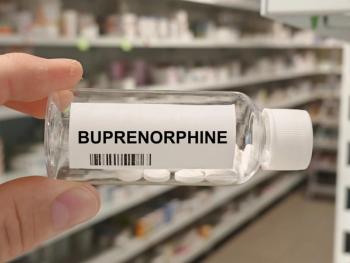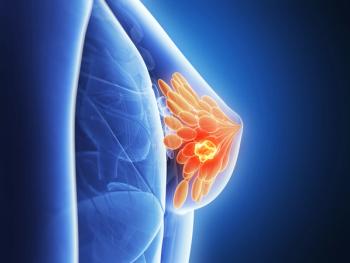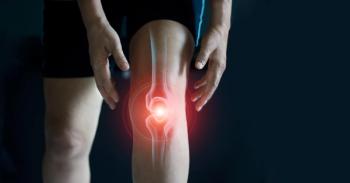
Elevated Non-HDL Cholesterol a Stronger Indicator of Major Cardiovascular Events Compared With LDL-C
Key Takeaways
- Non-HDL-C is a better predictor of MACE than LDL-C in statin-treated patients with ASCVD or high ASCVD risk.
- The study found a significant correlation between higher non-HDL-C levels and increased MACE risk, unlike LDL-C levels.
Non-high-density lipoprotein cholesterol was found to be more effective at predicting cardiovascular events such as stroke, myocardial outcomes, heart failure, and others compared with low-density lipoprotein cholesterol.
Results of a new study published in the Journal of Clinical Lipidology indicate that non-high-density lipoprotein cholesterol (non-HDL-C), which is the sum of cholesterol content carried by low-density lipoprotein (LDL), triglyceride-rich lipoproteins (TRL), and lipoprotein (a), is a better indicator of major adverse cardiovascular events (MACE) in statin-treated patients with atherosclerotic cardiovascular disease (ASCVD) or those with a high risk of ASCVD compared with LDL cholesterol (LDL-C) alone.1,2
For decades, LDL-C has been established in clinical guidelines as a major factor contributing to ASCVD risk, with countless randomized studies demonstrating an association between lowering LDL-C and reducing the risk of cardiovascular events. Triglyceride levels have also been linked to adverse CVD events, with one study finding that a high triglyceride to HDL-C ratio had meaningful associations with the incidence of MACE and cardiac death.1,3
Increasingly, many guidelines are including non-HDL-C as an additional marker that, when reduced, can lower cardiovascular risk. One analysis, conducted by Hansen et al., contributed to current literature by reporting non-HDL-C as an easily accessible marker for detecting patients with a high residual risk of ASCVD and death in those undergoing lipid-lowering therapy having already achieved their LDL-C targets. Another large study found that individuals with higher non-HDL-C levels had a heightened long-term risk of adverse outcomes such as myocardial infarction and stroke.1,2,4
Still, there are scarce prospective long-term studies, especially in cohorts of Asian populations, that evaluate the association between non-HDL-C and LDL-C levels and MACE in statin-treated patients with or at high risk of ASCVD. Therefore, in this current trial, the predictive abilities of each lipoprotein measure were compared in a large cohort of patients in Thailand 45 years and older with confirmed ASCVD or multiple ASCVD risk factors.2
The outcomes of the trial included 3-point MACE, which comprises all-cause mortality, non-fatal myocardial infarction, and nonfatal stroke, and other incidences of myocardial infarction, heart failure, strokes, and overall mortality, according to the investigators. In this post-hoc analysis, which utilized a registry of Thai citizens at risk for cardiovascular events, a total of 8245 patients that had successfully completed statin therapy were included, of which 6978 had complete non-HDL-C data and 7365 had complete LDL-C data.1
Across the follow-up period, study authors observed 776 patients with complete non-HDL-C data and 833 patients with complete LDL-C data developing 3P-MACE. Using a fully adjusted model, they determined that higher non-HDL-c levels were significantly correlated with a higher risk of 3P-MACE (HR: 1.008; 95% CI, 1.003-1.012; P < .001). Furthermore, for each additional increment in non-HDL-C levels, the risk of 3P-MACE further increased (HR: 1.120; 95% CI, 1.052-1.195; P < .001). In an interesting development, increasing LDL-C levels showed no significant association with 3P-MACE (HR: 0.995; 95% CI, 0.989-1.000; P = .072), with similar results when calculated using increasing incremenets.1
In their discussion, the investigators noted that the association between non-HDL-C and ASCVD was sustained even throughout subgroup analyses and in patients who achieved an LDL-C target of less than 70 mg/dL. Accordingly, the investigators believe that non-HDL-C can be a more significant predictor of future CV events than LDL-C, especially in Asian cohorts previously treated with statins. They attribute this strong predictive value with the comprehensiveness of non-HDL-c, which incorporates multiple cholesterol risk factors into one measurement.1
“Due to its ease of use, non-HDL-C could serve as a potential marker or a better primary target for residual risk in statin-treated Asian patients, helping to lower cardiovascular risk,” the study authors concluded. “Future non-observational studies are warranted to establish the causal relationship of this finding.”1
REFERENCES
1. Manosroi W, Phinyo P, Phimphilai M, et al. Non-high-density lipoprotein cholesterol outperforms low-density lipoprotein cholesterol in predicting cardiovascular events among high-risk Asians. Journ Clin Lipidology. 2025. doi:10.1016/j.jacl.2025.01.002
2. Gallagher A. Investigators find the triglyceride/high density lipoprotein cholesterol ratio is significantly associated with MACE. Pharmacy Times. Published January 8, 2025. Accessed March 21, 2025. https://www.pharmacytimes.com/view/investigators-find-triglyceride-high-density-lipoprotein-cholesterol-ratio-is-significantly-associated-with-mace
3. Hansen MK, Mortensen MB, Olesen KKW, et al. Non-HDL cholesterol and residual risk of cardiovascular events in patients with ischemic heart disease and well-controlled LDL cholesterol: a cohort study. The Lancet Europe. 2024;36:100774. doi:10.1016/j.lanepe.2023.100774
4. Hong S, Han K, Park JW, et al. Higher non-high-density lipoprotein cholesterol was higher associated with cardiovascular disease, comparing higher LDL-C in nine years follow up: Cohort study. J Lipid Atheroscler. 2023;12(2):164-174. doi:10.12997/jla.2023.12.2.164
Newsletter
Stay informed on drug updates, treatment guidelines, and pharmacy practice trends—subscribe to Pharmacy Times for weekly clinical insights.


















































































































































































































